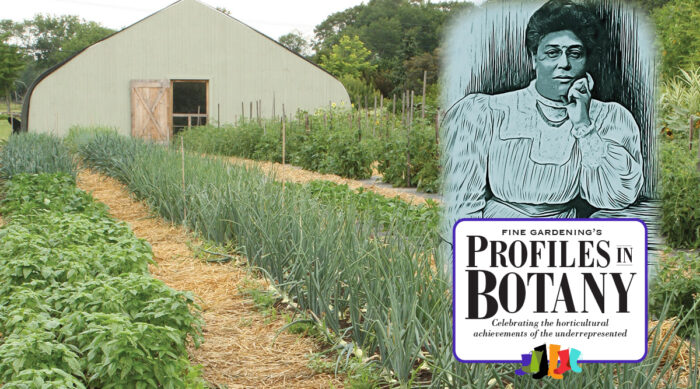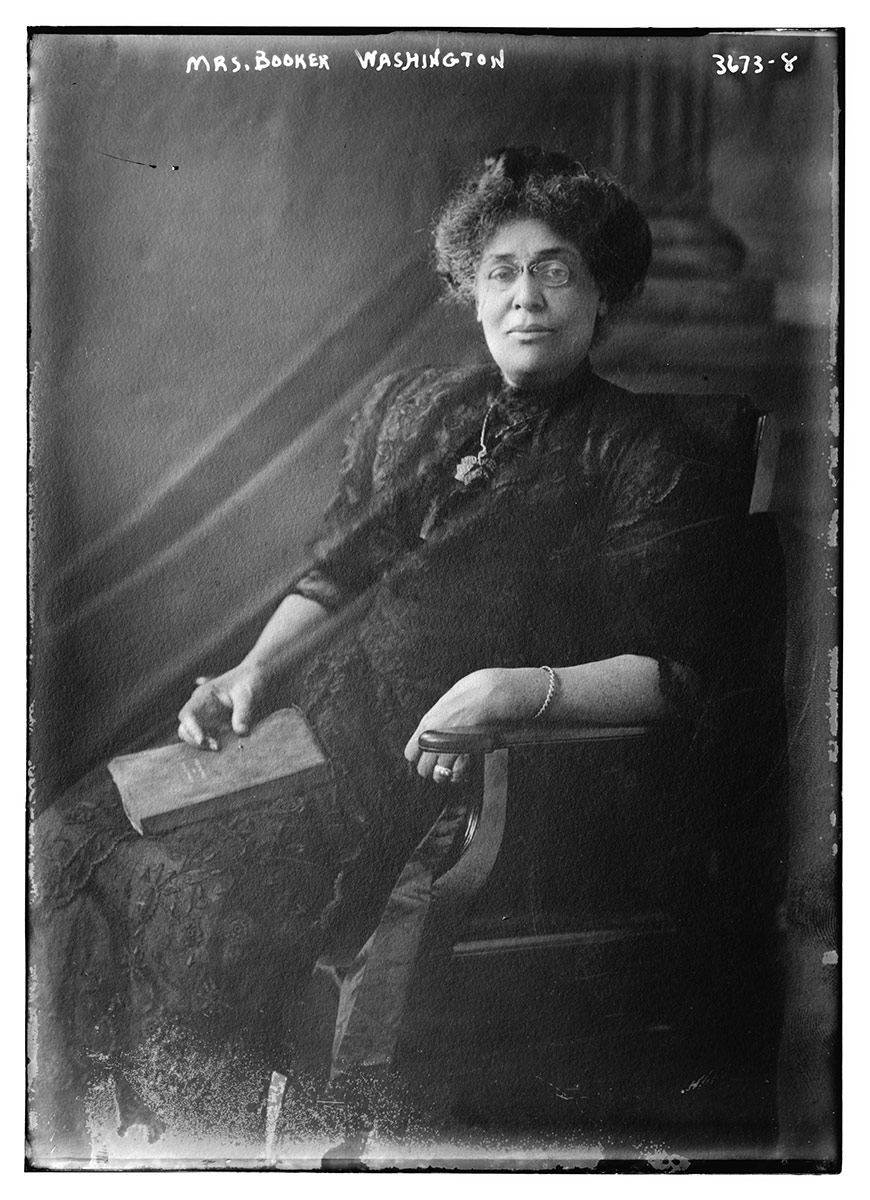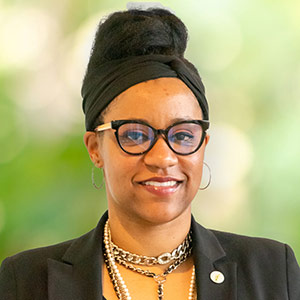
There is a Holy Trinity of work done by hand that the most revered Black rural Southern women—ones that have been given sainthood status in the community—have all seemed to master.
First, there’s cooking. As any self-respecting Southern chef knows, you don’t just show up to family functions with potato salad, sweet potato pie, and dressing. You earn your place and patiently wait your turn in line for years before you are worthy of bringing such hallowed dishes to the table.

Up next is sewing. Just think of the famed women of Gees Bend, Alabama, whose ability to stitch a mean quilt turned their local craft into a world-renowned art form.
Finally, there is gardening. A woman with an ability to grow food and who is equally skilled in the subservience of art to nature is rightfully revered. The taste of her home-grown goodies is further complemented by the beauty of her surrounding garden.
And while many women have touted their bragging rights as a top chef or master seamstress of their generation, historically, many were not so quick to state their case for being an expert horticulturist—until a woman named Margaret Murray Washington changed the perception of what it meant to have a career in outdoor work as a woman. And she didn’t just make the special skill set of the art of horticulture acceptable; she made it mandatory.

Early life and career in education
Born free in Macon, Mississippi, in 1865 (though scholars debate that this is her actual birth year), Margaret James Murray attended Fisk University, a historically Black college and university in Nashville, Tennessee. There she received a liberal arts education. Upon graduation she joined the faculty of Tuskegee Institute in 1890, where she began as an English teacher and headed the Women Industries Department until her death. As a renowned educator and public figure, she was most famously known as “Mrs. Booker T. Washington” when she became the third wife of Tuskegee founder and principal Booker Taliaferro Washington in 1893.
Margaret James Murray Washington worked so tirelessly alongside her husband to promote industrial education at Tuskegee that in the summer of 1899, wealthy benefactors gifted the couple a trip to Europe as a sign of their respect and appreciation. And it wasn’t her visit with Queen Victoria at Windsor Castle or interaction with Susan B. Anthony that were the highlights of this trip—it was a spontaneous visit to Swanley Horticultural College that caused her to elevate the curriculum for the women students of Tuskegee.

An overseas visit inspires a new direction stateside
Prior to visiting Swanley, Washington heard a discussion at the International Council of Women’s meeting titled “Farming in Its Various Branches as an Occupation for Women.” Here she was exposed to ideas that created a permanent shift in her perception of what a woman’s role in horticulture was and could be in the Southern United States. During the discussion, disciplines such as beekeeping, agriculture, horticulture, and gardening were referenced as viable careers for women. Agriculture had always been a part of Tuskegee’s foundation; it was a school where students worked the land, built the buildings, grew their own food, and raised their own livestock. Learning trades such as sewing, millinery, nursing, and dressmaking was popular and even encouraged. But the art of horticulture and gardening was not championed as much as practical employment for women. For the first postslavery generation, the fieldwork of horticulture had not yet shaken its roots in the horrific history tied to bondage.
A visit after the meeting to what was then known as Swanley Horticultural College helped to further enhance Washington’s already solid legacy as a champion of progressive women. At Swanley, Washington observed women engaged in the study of agricultural and horticultural work. She saw women in the garden planting vegetables, caring for roses, and growing food in the greenhouse. Women were also in the laboratory studying agricultural chemistry, botany, zoology, and applied mathematics.
For the first postslavery generation, the fieldwork of horticulture had not yet shaken its roots in the horrific history tied to bondage.
As she watched women planting seeds, pruning fruit trees, and learning the art of beekeeping, Washington knew the Southern states—with their existing agricultural production—were ideally set up for similar outdoor work. The realization that horticulture could provide limitless opportunities for Southern women sparked a career pivot for Washington. At the time, out of the approximately 1,000 students attending Tuskegee, half were women.

A wide-reaching horticulture program is launched
Upon her return to Alabama, Washington inaugurated a curriculum heavy in ornamental horticulture for young women at Tuskegee. The women were taken directly into the field and taught how to lay out and beautify dooryards and how to care for shrubbery, flowers, orchards, and fruit. Additionally, they learned beekeeping and how to manage a home garden.

Floriculture topics such as the harmony of color and the utilization of the form and size of flowers were also available. Other lessons were provided in landscape gardening and market gardening. The women learned entomology, root and stem grafting with active and dormant buds, and the trimming and shaping of beds and borders. Propagation by layered cuttings, the division of roots, and separating bulb offsets were also taught. As if all of that were not enough, the course studies also included design instruction for private and public grounds, roads, parks, walks, and streets. Finally, botany was covered in the greenhouse, along with other topical instruction on mineralogy, gathering seeds, and beneficial birds and insects. This course of study extended over two years, and the young women who completed the course left it skilled in the knowledge of horticulture.
A lasting legacy
While we don’t know how many women left Tuskegee and went into the field of ornamental horticulture as a profession, we do know that the students were charged with taking what they learned and educating others throughout their community. They would become the teachers of generations of at-home horticulturists, floriculturists, rosarians, and beekeepers to follow.
While former First Lady of the United States Michelle Obama led the horticultural renaissance that is permeating America today, it is the first lady of Tuskegee, Margaret Murray Washington, who shifted the perception of women in horticulture in the United States. She is responsible for ushering in the awakening.
—Abra Lee is a Southern horticulturist whose research and writing explores the history, folklore, and art of horticulture.
Sources
- library.artstor.org
- hathitrust.org
- loc.gov/item/2014700310/
- loc.gov/resource/ggbain.20376/?st=image
- loc.gov/resource/ggbain.20373/
- archive.tuskegee.edu
Fine Gardening Recommended Products

Pruning Simplified: A Step-by-Step Guide to 50 Popular Trees and Shrubs
Fine Gardening receives a commission for items purchased through links on this site, including Amazon Associates and other affiliate advertising programs.

Scotts Cordless Grass-Shear/Shrub-Trimmer Combo
Fine Gardening receives a commission for items purchased through links on this site, including Amazon Associates and other affiliate advertising programs.

Corona E-Grip Trowel
Fine Gardening receives a commission for items purchased through links on this site, including Amazon Associates and other affiliate advertising programs.



















Comments
Log in or create an account to post a comment.
Sign up Log in